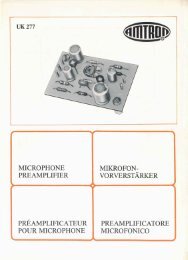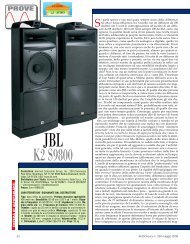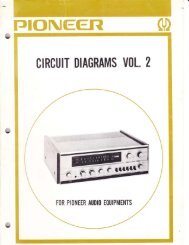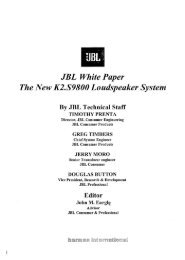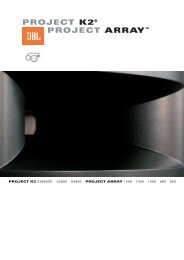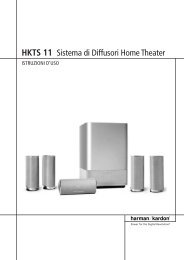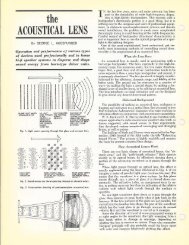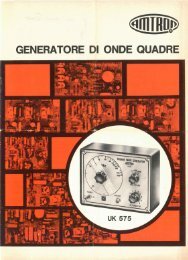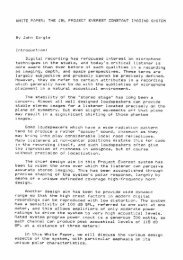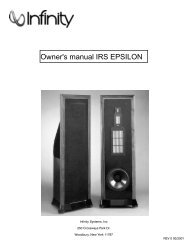MEASUREMENTS
MEASUREMENTS
MEASUREMENTS
You also want an ePaper? Increase the reach of your titles
YUMPU automatically turns print PDFs into web optimized ePapers that Google loves.
Chrominance-to-Luminance Gain & Delay Inequalities<br />
• DEFINITION<br />
Chrominance-to-luminance gain inequality (relative chrominance<br />
level) is the difference between the gain of the chrominance<br />
components and the gain of the luminance components as<br />
they pass through a system. The difference is expressed in<br />
percent or dB, and the number is negative for low chrominance<br />
and positive for high chrominance.<br />
Chrominance-to-luminance delay inequality (relative chrominance<br />
time) is the difference between the time it takes for the chrominance<br />
portion of the signal to pass through a system and the time it<br />
takes for the luminance portion to pass through. The amount of<br />
distortion is expressed in units of time, typically nanoseconds.<br />
The number is positive for delayed chrominance and negative<br />
for advanced chrominance.<br />
Figure 21. A combination signal which includes a 201<br />
modulated pulse (CCIR Line 17).<br />
• PICTURE EFFECTS<br />
Gain errors most commonly appear as attenuation or peaking<br />
of the chrominance information, which shows up in the picture<br />
as incorrect colour saturation.<br />
Delay distortion will cause colour smearing or bleeding, particularly<br />
at the edges of objects in the picture. It may also cause poor<br />
reproduction of sharp luminance transitions.<br />
H TEST SIGNALS<br />
Chrominance-to-luminance gain and delay inequalities are<br />
measured with a 10T or 20T modulated sine-squared pulse,<br />
sometimes called a composite pulse. Many combination ITS<br />
signals include such a pulse.<br />
Figure 22. The chrominance and luminance components<br />
of a modulated sine-squared pulse.<br />
The frequency spectrum of a composite pulse includes energy<br />
at low frequencies and energy centred around the subcarrier<br />
frequency. Selection of an appropriate pulse width is a tradeoff<br />
between occupying the PAL chrominance bandwidth as fully as<br />
possible, and obtaining a pulse with sufficient sensitivity to<br />
delay errors. (The 10T pulse is more sensitive to delay errors<br />
than the 20T pulse, but does not occupy as much of the<br />
chrominance bandwidth.) CCIR specifications generally<br />
recommend the use of 20T pulses, while 10T pulses are<br />
commonly used in the U.K.<br />
A modulated bar is also sometimes used to measure<br />
chrominance-to-luminance gain inequalities.<br />
• MEASUREMENT METHODS<br />
Conventional chrominance-to-luminance gain and delay measurements<br />
are based on analysis of the baseline of a modulated<br />
sine-squared pulse. (See Appendix B for a definition of the<br />
time interval T.) This pulse is made up of a sine-squared<br />
luminance pulse and a chrominance packet with a sinesquared<br />
envelope, as shown in Figure 22.<br />
25



